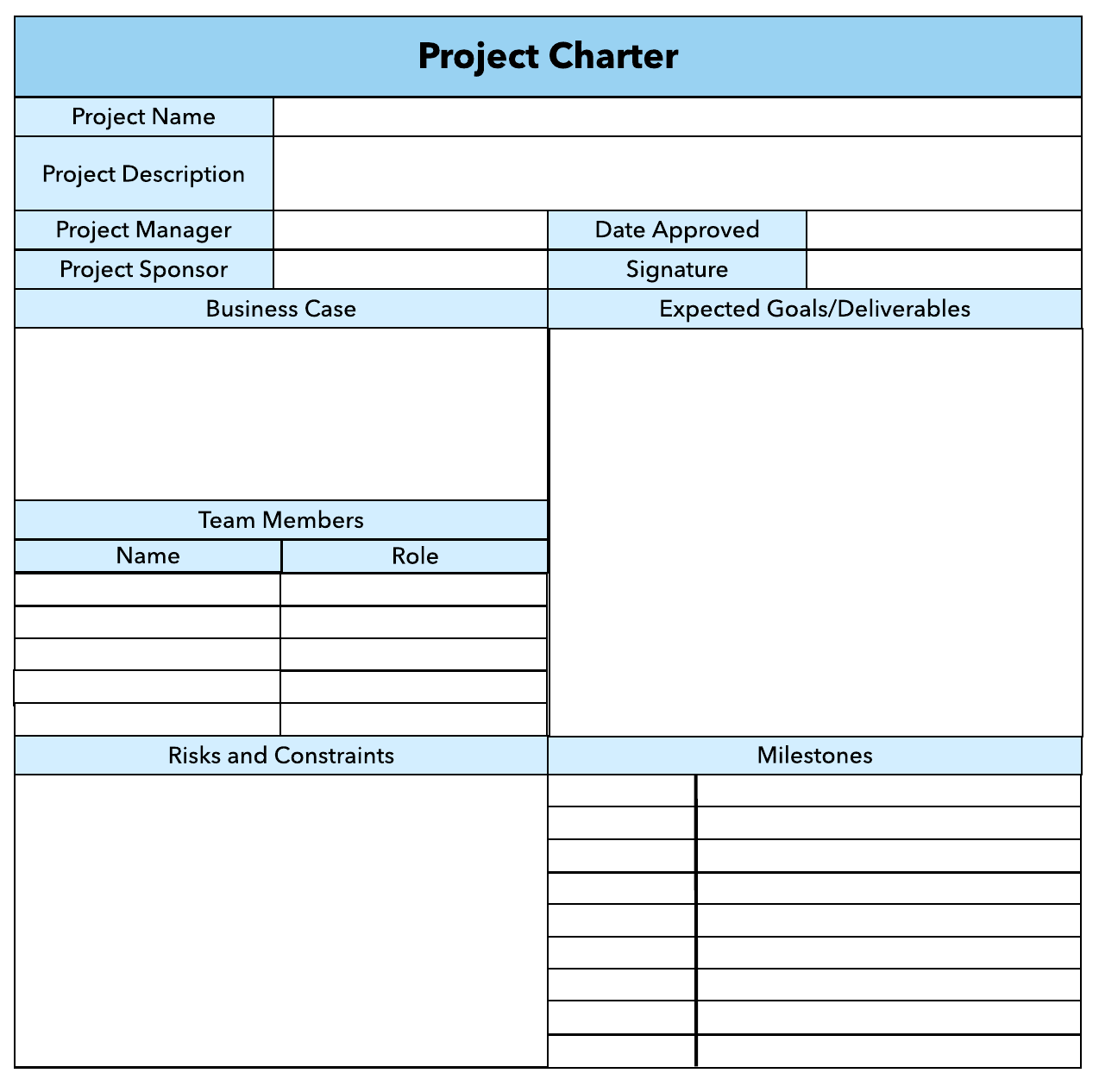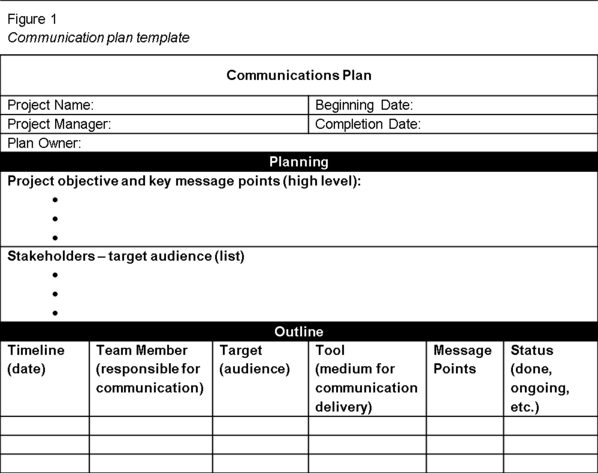How to create a perfect Project Plan: A step by step guide
Are you looking for the best possible ways of making your project plan succeed?
First of all, let’s understand what is a project?
As per Project Management Institute (PMI), “Project” is a temporary endeavour, undertaken to create a unique product, service or result. A project is temporary since it has a defined beginning and end time. It also has defined scope and resources.
Takeaway: Project should not be misunderstood with regular activities. Rather Project is temporary and specific transient endeavour to achieve planned objectives. These eventually could be defined in terms of outcomes and benefits. Project Management on the other hand, is a methodical approach to planning and guiding project processes, throughout project phases to achieve the project objectives.
We often hear the words like ‘’Project Plan’’ and ‘’Project management plan’’. Are these two same or different concepts? Actually, PMBOK® itself does not address any difference between the two. But the people who are practicing, Project management principles, often encounter these two terms. In some organizations, these two terms are used interchangeably. While in others they use these terms for different purposes. Let me clarify you that actually these two terms have different meaning….
Yes true.
Project plan is a very broad level plan prepared initially. While we majorly focus on scheduling. It is intended for defining projects’ overall vision. Thus, it is a visionary document and tells about ‘what’ part of project.
On the contrary, Project Management Plan is more detailed document and deals with ‘how’ part of the project. It tells about the actual project management during project execution. It consists of several other plans such as Project Resource management plan, Project Scope Management plan, Schedule Management Plan, Project Risk management plan, Project Cost management plan, Project Communication management plan, etc.
So, now I hope you are clear about the basic differences between the two plans.
Takeaway: Program Management plan often creates anxiety among Project management professionals. Is it same as project management plan? Let me touch upon the Topic “Program Management to make you clear about the difference between Project Management and Program Management. Actually, Program Management is the ongoing process of managing multiple projects at the same time. So Project management is a subset of Program Management. Program Management Plans are initiated in order to meet or exceed business’ critical success factors with the combination of various small and big projects. It demands close integration of processes, communications and close monitoring of program resources and setting their priorities. While Project management is the centralized approach taken by Project manager in order to plan, organize, monitor and achieve key deliverables by deploying resources.
Suggested read - Top 10 Reasons Why You Should Go into Project Management
How to plan a Project?
Coordinated to perfection, transparent, schedule specific and accurate, a well-developed project plan will go a long way in making your project reach its completion in good time. Here are the essential 10 steps for creating a project plan.
Step 1: Discussion of plan and key components with stakeholders
Often misunderstood across the life of a project, a project plan comprises of living documents that can be expected to keep changing in some way or the other. It offers direction to all those involved in the project, directly or indirectly. This roadmap sets the overall course for the project. It also guides all team members accordingly. Here, a common ambiguity relates to the equating of the project plan to the project timeframe that happens to be just a singular component of the same. But now, as we already are aware Project management plan itself is also a subset of project plan.
Generally, the key stakeholders of any project are those who are likely to be impacted by the project development flow and its end. They fail to comprehend the underlying nature of such project plans. Gaining commitment and buying happens to be the primary and most fundamental aspects of project management. All key stakeholders need to gain knowledge about the project plan and planning processes. This enables them to be in a position of reviewing and approving the documents pertaining to them. Hence, Planning Stakeholder engagement finds its way to project success.
Project Planning Components
Project Charter
A formal document, which outlines the purpose and objectives to carry out the project. It provides a preliminary delineation of roles and responsibilities and project goals. It also identifies main stakeholders, and sets project milestones in a broad way. It serves as a reference of authority for the future of the project.

Image Source: https://d2slcw3kip6qmk.cloudfront.net
You may also like - Project Cost: Why is it important for Project Managers?
Baselines
Also referred to as performance measures (as the overall performance of any given project is measured against them). Baselines include the three starting points of a project: schedule, scope and costs. They are useful for measuring whether the project is on the right track, or not.
Baseline Management Plans
Baseline Management Plans encompass documentation pertaining to the ways in which variances to given baselines are to be reviewed and managed across the project. They outline the steps to be followed in case of baseline variances, the exact processes that need to be initiated, a list of those to be notified, funding of changes, and so forth.
The other work products linked to the project plan and part of project management plan include a quality plan, risk management plan, procurement plan, and communications plan.
Step 2: Definition of all responsibilities and roles
The project documents are unlikely to be reviewed by all key stakeholders. So it becomes important to assess all those people who’ll be needed for approving different parts of the project plan. These include:
- The project sponsors who are the owners of and will be funding the project. It is essential that they review and approve the different aspects of the project plan.
- There are designated business experts whose requirements have to be adhered to with regards to the end product. These stakeholders have an important role to play in developing the scope baseline. They also approve all documents related to the same. They usually showcase their interest in project timelines as well.
- Project managers are responsible for creating, executing, and controlling the overall project plan. As they are involved in building the plan, their approval is not required. The 3 levels of skillsets defined by PMI for Project managers include Technical, Strategic & Business management and leadership.
- Teams responsible for building the end product will be participating in the development of several aspects of the project plan. These aspects are assessment of quality, risks, and design issues.
- The end users who will be using the final product may have a role to play in the development and review of the plan. They are seldom required for signing it off.
- The other key stakeholders include procurement specialists, quality/ risk analysts, auditors, etc. They are needed for gaining approval on specific parts of the project plan pertaining to them.
Suggested read - How is a Leader different from Manager?
Step 3: Holding of the kick-off meeting
It is an effective means for bringing key stakeholders together for discussing the project. A kick-off meeting initiates the planning process. It is also useful for building trust among all team members. The ideas of all members need to be taken into account during kick-off meetings. This also demonstrates the sponsor’s commitment for the project. The topics forming the agenda of such a meeting include:
- Project vision (sponsor)
- Business vision / strategy (sponsor)
- Team building
- Delegation of roles and responsibilities
- Decision making processes
- Team commitments
- Size of groups and sub-groups, if any
- Ground rules
Kick off meeting should be held in such a way so that everybody get awareness about the deliverables expected from them. It should also ensure that the project earns its necessary buy in leading to success.

Image source: https://jomcdermott.files.wordpress.com
Step 4: Development of the Scope Statement
It is one of the most important documents relevant to the project plan. The Scope Statement lays down the foundation for all aspects of the project. It serves as a description of the project and its outcomes. It is used for getting the common agreement of all stakeholders with regards to the scope. It is also useful for gaining buy-ins and agreements from all stakeholders and sponsors. It also decreases the probability of miscommunication to a large extent. The Scope Statement is likely to change and grow as the project proceeds, and includes:
- Business problems and needs
- Project objectives
- Project justification and the advantages of completing the project in time
- Project scope and deliverables
- Approach, key milestones, and all those components that are likely to be influenced by the nature and size of the project.
Step 5: Development of Scope Baseline
Post the confirmation of deliverables in the Scope Statement, a work breakdown structure (WBS) needs to be developed as a part of project management plan. It is typically a decomposition of different deliverables in a given project.
The WBS serves as the scope baseline with three significant elements in place; these are:
- WBS identifies the different project deliverables and all the work that needs to be done.
- Breaks down large deliverables into a hierarchy of small-sized deliverables.
- The "work package" or the lowest level is numbered corresponding with different activities and tasks.
Step 6: Development of cost baselines and schedules
The various sub-steps for developing cost baselines and schedules are:
- Identification of all activities and tasks that are needed for producing each work package, or creating WBS of tasks.
- Identification of resources for all tasks, if known.
- An estimation of the timeline required for each task completion.
- Estimation of the costs involved with each task by using average hourly rates for individual resources.
- Consideration of resource constraints, or the period for each resource that can be realistically devoted to a specific project.
- Determination of the inter-dependency of tasks and the development of critical paths.
- Development of schedules for required estimates and tasks.
- Depiction of chosen time periods about all resources. Which resource is doing what task, the amount of time expected to be spent on each task, and the time when the tasks are to begin and end.
- Development of the cost baselines as time-phased budgets, or determination of cost by its time period.

Image source: https://vgpblog.files.wordpress.com
This process is subject to changes and steps are likely to be added or repeated.
Step 7: Creation of Baseline Management Plans
After establishing the scope, schedules, and all cost baselines, the steps for managing variances to all plans need to be documented. The management plans would generally require a review and approval procedure for modifying baselines. Here, diverse approval levels are necessary for including different kinds of changes. Additionally, it must be known that all new requests will not lead to changes in the schedule, scope, or budget.
Step 8: Development of the resource plan
Clearly depicting the time periods when each resource would be coming in or leaving the project. The resource plan is a typically a chart similar to most project management charts such as a Gantt chart. However, it does not show begin/end dates, estimates, tasks, or the critical path. It reveals the resource, and the period of time that it may remain on the project. It also emphasizes on controlling the resources.
You may also like - 5 Useful (& Free) Project Management Tools for Agile Projects
Step 9: Analysis of project risks and quality
These two consist of essential parts of project management plan and make project a success
Project Risks
Referring to an event that may or may not take place. A risk impacts the outcome of any project significantly. The analysis of risks incorporates a determination and quantification of the impact and probability of a specific event taking place. This enables project managers to assess and monitor which risks require attention. It also helps them develop risk management plans for understanding and communicating how diverse teams would need to react to high-risk events. It also helps to implement risk responses. Also, Risk Response Strategy gives leverage to Project manager to Escalate any positive or negative risk , if it is beyond his scope.
Project Quality
It ensures that all end products meet customer specifications. Project quality also determines what key business experts want to use. Project quality lays emphasis on preventing errors. This step does not wait to inspect the product after the project ends, and then eliminate errors. Instead, it recognizes that quality serves to be the management’s responsibility and has to be performed across the project. Creation of the Quality Plan incorporates the setting of acceptance criteria, standards, and metrics that will be put to use across the project. Its forms the base for all reviews and inspections that will be used at all stages of project execution.
Step 10: Communication for Success
The Communications Plan states:
- Which project member of key stakeholder wants which reports, in what format, how often, and by using which specific media?
- The ways in which issues will be escalated, and their time frames.
- The place where project information needs to be stored and information about who may access the same.

Once completed, it becomes important that the significance of the project plan is communicated to the sponsor, along with its contents. It should include:
- Review and complete approval of all aspects of the project plan.
- Processes required for changing any contents in the plan.
- Reference to the next steps—execution of and control of the project plan. It should also include roles/responsibilities of key stakeholders in the upcoming phases.
Apart from above mentioned key steps, we now need to address the challenges posed by increasing demand for Automation in project management. But believe me, Automation is not a threat to project management. The only way to overcome this myth is to have a robust collaboration of man with machine. Which is now expected in Project management also. This is to use automation advantages for Project manager’s success. Different communication tools like Slack and HipChat are available for reminders, notifications and status updates for project managers to bring everyone on the same page. Various project scheduling softwares can be utilised for project scheduling with customization. Hence Project managers have more tools in their toolkit ever in order to make their project a success.
Takeaway: Most of you are aware that in September 2017, PMBOK® Guide – Sixth Edition has been released replacing the Fifth Edition. So potential project mangers targeting at PMP certification need to refer Sixth Edition of PMBOK® Guide. This is because PMI has declared that PMP exam will change from 26 March'2018 based on new edition. Hence, get equipped with new updates and undergo PMP training based on PMBOK® Sixth Edition.
Go ahead! Implement these 10 steps for creating a project plan and say “hello” to success!
Click here for PMP course
